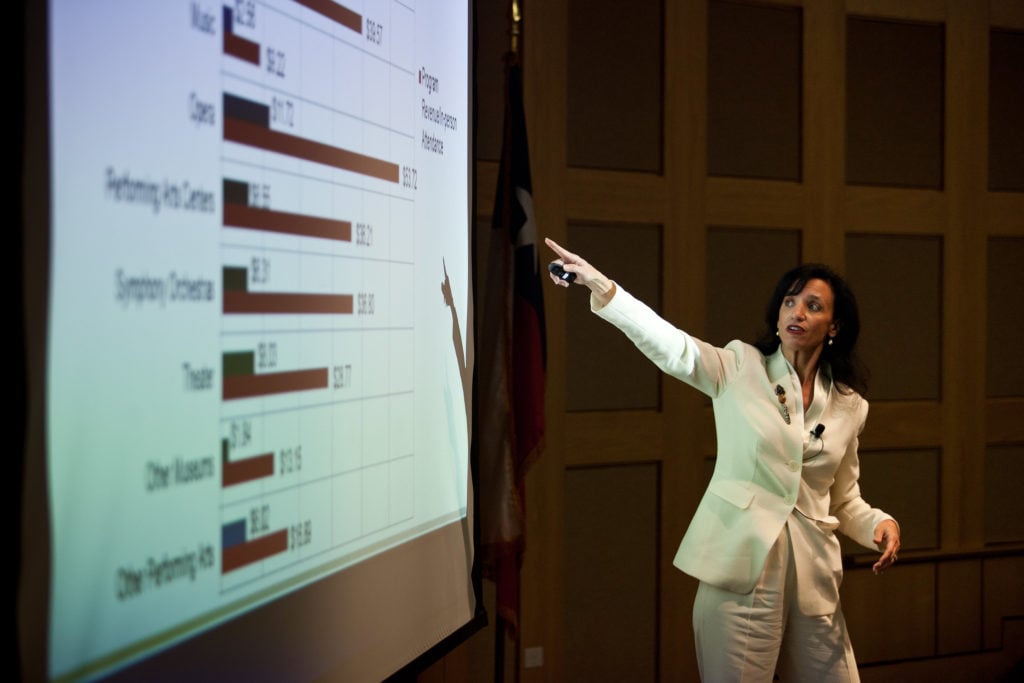Art World
American Arts Organizations Stand to Lose a Staggering $6.8 Billion This Year as a Result of the Shutdown, a New Study Says
The new report offers museums advice on how to weather the storm.

The new report offers museums advice on how to weather the storm.

Sarah Cascone

When arts organizations across the United States closed their doors indefinitely two months ago, revenue from ticket sales fell to zero overnight—and, for some, their very survival was thrown into question. Now, a new study estimates that cultural institutions stand to lose a total of $6.8 billion year over year, equivalent to a loss of 26 percent of operating expenses on average.
The report, titled “In It for the Long Haul,” from SMU DataArts and TRG Arts, draws on an analysis of historical and projected data from 35,000 nonprofit organizations across the US. Rather than just doom and gloom, however, the report also aims to give cultural organizations tools to face the challenges ahead.
“There will be a new normal,” Zannie Voss, director of SMU DataArts, who authored the paper with Jill Robinson, CEO of TRG Arts, told Artnet News. “Too much has changed to say that we could go back to doing things the way we’ve always done them.”
Some institutions won’t make it. As early as March, the American Alliance of Museums was predicting the closure of as many as 30 percent of the nation’s museums if the shutdown extended longer than a couple months.
Aside from a few outliers, the median arts organization can only afford to pay its regular expenses for two months without additional revenue coming in. With all programming on hold during an extended closure, an institution can stretch its working capital a bit further, especially if it furloughs employees. But the obstacles remain considerable.
“It depends on what their situation was in terms of liquidity going into the crisis,” Voss noted. “If they don’t have reserves or access to credit lines or working capital, it’s going to be very difficult for them to be able to make up that kind of a loss.”
The report’s $6.8 billion top line figure was based on surveys conducted across the arts sector, with the Andrew W. Mellon Foundation providing member data from national service organizations such as the Association of Art Museum Directors, the Association of Performing Arts Professionals, and the League of American Orchestras.

Zannie Voss, Director, SMU DataArts. Photo by Kim Leeson.
The losses may be compounded by a reduction in public arts funding down the line as local governments adopt new austerity measures. “We haven’t even begun to see the ramifications on city or state budgets and the hard decisions that are going to have to be made as a result of that,” Voss said.
Reopening will look different for each individual organization as they attempt to devise a timeline and a level of activity that respects the health and safety of both employees and audiences. And although some people will be eager to come together again, especially for communal arts and culture experiences, there will also be varying degrees of social scarring.
“When you think about how this crisis has impacted the lives of those who have fallen of ill or have lost loved ones, there’s a sense of fear and hesitancy, a discomfort with being in confined spaces,” Voss said. “In a part of the country that has had relatively little instance of people falling ill, perceptions are going to be quite different than they would in a community that has been hard hit.”
If cultural organizations close en masse, it will be a blow to the nation’s GDP—the sector accounts of 4.5 percent of the nation’s economy, according to the National Endowment for the Arts. But the effects aren’t limited to jobs lost and tourism dollars unspent.
“What I think is even more profound is the social loss. Arts and cultural organizations have historically played a role as places where people gather,” Voss said. “What you do now, how you treat patrons and employees, that’s what everyone will remember after the crisis recedes. Enough people have to care that you don’t go away because of the value you provide to your community.”
But beyond the unprecedented challenges cultural institutions face in the short term, the extended closures also offer a unique opportunity to access their overall mission and core values.
“For the field as a whole, there is a good potential for reimagining and understanding how to continue to be relevant, to adapt,” said Voss. “There’s a lot of resiliency and there’s a lot of imagination.”